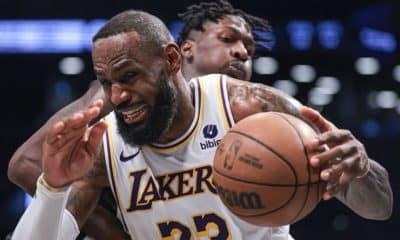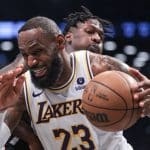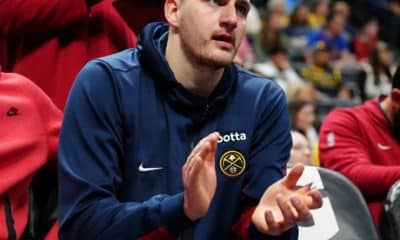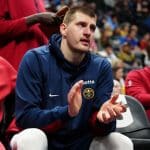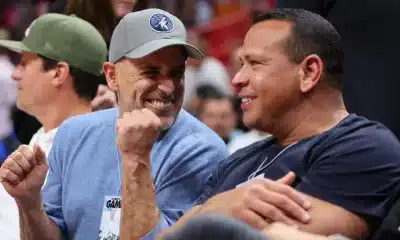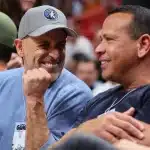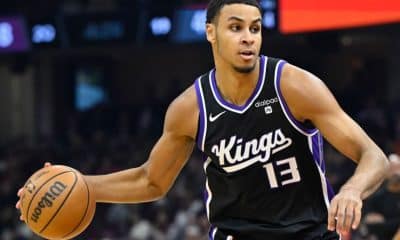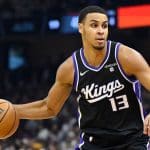NBA
The Top 10 Prospects in the NBA
Who are the best NBA prospects 23 years old or younger? Nate Duncan gives his in-depth breakdown.
Nothing inspires NBA intrigue quite like potential. The NBA has by far the most interesting draft; basketball is the one major sport where the fan can actually watch enough of the prospects to have an opinion beforehand. And there are few enough draftees and players in the league that one can actually keep track of them all. In this most star-driven of leagues, the search for the next luminary is one of the most fascinating endeavors.
This list, inspired by a question in my weekly chat and similar lists from Baseball Prospectus, Basketball Prospectus and Football Outsiders, is a stab at assessing the league’s future stars. The question: Which players 23 or under (as of February 1, 2015) would you most want to have for the rest of their career? Age 23 was chosen because it encompasses up to a year after what would be the typical player’s senior year in college. It is also probably the last year in which one can say “he’s only ____ years old!” and have it credibly imply his ceiling ought to be much higher than his current performance.
Important things to remember in these rankings:
1. Age. This is perhaps the most important variable in predicting future performance. A certain level of performance means much more if it occurs at 19 than at 22, because players generally continue to improve until reaching their peak between (roughly) 25 and 29.
2. Certainty. A older player’s established level of performance can act as somewhat of a brake on simply picking the youngest players. An older player is closer to his peak and thus there is more certainty as to what he will eventually become. There is a temptation to overvalue the “limitless potential” of a younger player, when that youth also means more can go wrong in the fulfillment of that potential. Injuries, roster fit, poor coaching or simply an inability to improve as much as hoped can all derail a young player. You would much rather have a 22-year-old Kawhi Leonard, who has already established a very high level of performance, than a 19-year-old who might be slightly better one day but could also fall well short of Leonard’s production.
3. Position. No player exists in a vacuum. NBA teams are trying to build a full roster that can compete for a championship, and that impacts player value. The wing and center positions are the most difficult to fill, whereas more teams have quality starters at point guard or power forward. This is extremely important to consider when building a team—with a great wing or center it is much easier since good players at other positions are more readily available. Another key variable is whether the player projects to defend his position adequately in time. Most players this young, especially bigs, are not going to be great defenders. But if a player, especially a big, is below average defensively that makes for some unique team-building challenges.
The list will also adopt a similar bent as my list of the NBA’s top 10 players from last March.
Tier 1
1. Anthony Davis. Age 21
He has probably been the best player in the league to this point, with a five point advantage in PER over anyone else. What’s more, his team’s performance with him on the court has finally caught up with his box score contributions. Davis might be among the top-five 21-year-old prospects ever. He should really be about five tiers above the rest of this list.
Tier 2
2. Kyrie Irving. Age 22
The Cleveland point guard took the league by storm as a 19-year-old rookie with one of the best seasons ever by a teenager. Since then he had largely stagnated, derailed by nagging injuries and a general ineptitude in Cleveland to which he certainly contributed, especially on defense. But a summer with USA basketball and the arrival of LeBron James and Kevin Love has Irving back on track so far this year. His defensive effort has improved (though he still has a ways to go), and overall he has seen a massive increase in efficiency. Irving’s True Shooting Percentage is now above 60, as he makes a ridiculous 71 percent within three feet and has also upped both his three-point volume and percentage to career highs. What’s more, the Cavs are finally playing better basketball with him on the court. A season ago, they were 1.6 points per 100 possessions worse when he played despite the overall lack of talent on the roster. It may prove difficult for Irving to ascend to greater statistical heights as long as James and Love are also soaking up possessions, but that should not obscure how good Irving has been this year.
3. Jabari Parker. Age 19
Like the rest of the 2014 draftees, Parker’s ranking is based much more on his potential skillset and even pre-draft evaluations than what he has actually done on the court from a statistical standpoint in only 20 or so games. I rated Parker number one on my 2014 draft board, and what we have seen so far only bolsters that position. As I wrote a few weeks ago, Parker has popped off the screen with his combination of athleticism and skills. He has not been asked to create a great amount, but for a rookie even his average usage rate (he leads rookies in that department) and above-average PER is a great sign. In isolation against power forwards he often manages to get a good shot, he has been great finishing at the basket (72.4 percent from less than three feet including 39 dunks already), and his passing eye has been excellent for such a young power forward. He could probably handle a greater creation burden than he’s being given so far. The only really disappointing aspect has been his adaptation to the NBA three-point line, where he is clearly uncomfortable and is only 4-16.
The Chicago product’s best long-term position is probably power forward because he will usually have an offensive advantage there, but he possesses the skills of a wing player. With quick enough feet and enough heft to guard the post, he could eventually evolve into a plus defender at the power forward position, able to switch off onto smaller players with some modicum of competence. Even now, he has not been a total disaster defensively, which is something in itself for a young power player.
While Irving gets the nod over Parker on this list due to the fact he has successfully navigated three more years of development, Parker’s rarer skillset probably gives him the higher ceiling.
4. Kawhi Leonard. Age 22
The youngest NBA Finals MVP would not appear to have nearly the offensive ceiling of the players above him on this list. This is the first season of his career with an above-average usage rate, as Gregg Popovich has made a concerted effort to get the ball to Leonard as a creator as he prepares him for a role as the proclaimed future of the franchise. As Kevin Pelton wrote, Leonard has moved his game outside a bit as a result and is taking more jumpers, especially off the dribble. His efficiency has fallen as a result, but Popovich will live with those growing pains in pursuit of the long-term goal of making Leonard more of a primary option.
But even if Leonard does not prove capable of becoming a top-two offensive option on a good team, he still deserves his place on this list with his outstanding defense, shooting and rebounding on the wing. He even has the ability to slide up to the four in small lineups. That combination of skills is essential for team-building. Even if you accept that he lacks the ceiling of an offensive superstar, Leonard provides the greatest certainty of any player on this list.
Tier 3
5. Giannis Antetokounmpo. Age 20
The Greek Freak has earned that nickname and then some. He is probably in the top 10 players of the last 10 years in terms of pure athletic potential on a basketball court with his incredible length and growing strength and athleticism. He also, despite the “new” age limit, was essentially the same age as LeBron James was when he came into the league due to his December birthday. Now at 6’11 with an enormous wingspan, the physical potential is limitless.
That said, we have not quite seen the evidence to indicate Antetokounmpo will be a premium offensive player. He can score in transition and off advantage situations in the halfcourt, but he has not yet shown the quick change of direction, acceleration or moves to really shake his man one on one like the best wing scorers. Of greater concern is the fact that his shot has completely abandoned him this year. He is 2-13 on threes and 19/68 on twos away from the rim. Fortunately, he has gotten to the restricted area for 122 shots on which he shoots a healthy 64 percent. But the bigger issue is his complete and puzzling unwillingness to take open threes after a totally respectable performance from downtown last year.
Defensively, he needs to increase his hip flexibility so he can really get into a stance and guard, although he has shown potential as a stopper (like against Joe Johnson down the stretch in a double OT thriller against the Brooklyn Nets). Another small issue is that Giannis has not had particularly noteworthy efforts on the boards or creating turnovers.
None of this is meant to disparage him as an overall prospect – he’s on this list for a reason. But he has not quite shown enough in actual performance to put him any higher on this list.
6. Andre Drummond. Age 21
Drummond was another player who came into the league at somewhat of a younger age, so he remains only 21 in his third season. He is one of the league’s best rebounders, especially on the offensive end. In a functional offense with some modicum of shooting around him, Drummond would be a great threat rolling to the rim for alley-oops. He also has great potential as a shot-blocker, although he struggles with his positioning on help defense and curiously is not as much of a deterrent at the rim as his size would suggest even when he’s there in time.
But after feasting on inside shots his first two years, Drummond has really struggled this season
Much of that is due to how he has been used. Stan Van Gundy tried Drummond extensively as a postup option early in the season, but he was not nearly ready for that kind of burden. The result is a career low .477 True Shooting Percentage for Drummond on the season, which is of course exacerbated by his execrable free throw shooting. But that is in large part a function of the postups and the overall lack of shooting and playmaking for the Pistons’ miserable offense. Nevertheless, it is debateable whether he will ever be anything approaching a primary option on offense, especially considering the free throws.
Drummond’s quick feet and hops should allow him to evolve into an elite defensive player in time, although trying to block a shot with his right hand on occasion would help. At the very least then, Drummond projects as a rebounding and defensive monster who finishes at an elite level on the pick and roll, with the potential for more scoring with his quick feet and massive frame. While others below him have more superstar potential, Drummond has already produced at an elite level in the box score for two years. That certainty means a lot.
Tier 4
7. Bradley Beal. Age 21
Beal is a player whose burgeoning reputation has exceeded his actual production to date. He started for a second-round playoff team and had some nice games during Washington’s run last year, but overall he is not a star yet. Last year he had a 14.3 PER, while he is at 11.7 this year in 11 games as he returns from his wrist injury.
Fortunately, a lot of Beal’s offensive problems could be cured by better shot distribution. He takes a ton of long twos and rarely gets to the foul line, but he’s solid at the rim and great from beyond the arc at 40 percent last year and 49 percent this year. There is no excuse for someone with that kind of three-point stroke to have a below-average True Shooting Percentage. Hopefully Beal will improve the versatility of his release from downtown and pick up some veteran tricks to get to the line, both of which could really improve his efficiency.
Stardom could absolutely be in his future, but he is further away than commonly believed just yet. We also must ding Beal a bit for his injury history, as he has missed significant time in all three of his seasons so far.
8. Dante Exum. Age 19
The Australian has as much potential as some of the players much higher on this list, but so far his season has been quite the mixed bag (which was expected given he is coming from Australian high school basketball). He has outperformed expectations defensively given his background, showcasing his length and elite lateral quickness to contain opposing point guards.* He also has shown the elite vision necessary to be a full-time point guard, although his ball-handling needs a lot of work. Finally, Exum has shown the ability to heat up from outside on occasion, although overall his jumper has been pretty bad.
The main disappointments have been his low usage rate (although typical for a rookie) and relative inability to beat his man off the dribble and finish at the rim. He now sports a 6.9 PER, which is obviously not good. Nevertheless, he has not been asked to do too much offensively yet in the pick and roll, which will ultimately be his bread and butter. Although it would be nice to see more explosive rim attacks, overall he looks right on schedule for a player I ranked number two on my 2014 board.
Tier 5
9. Rudy Gobert. Age 22
Most fans will think this seems very high for Gobert, who was picked No. 27 in the weak 2013 draft with a pick the Jazz bought from Denver. But the Frenchman with the 7’9 wingspan and 9’7 standing reach is already nearing the point at which he constitutes an above-average defense on his own, as Spain found out during a monumental upset at the World Cup. Not only is Gobert already an elite rim-protector, allowing opponents to shoot just 39.3 percent at the basket on 5.3 attempts per game, but he has elite quickness and straightline speed for the center position as well.
Gobert still needs work on the offensive end, where the Jazz have often struggled to score with him on the floor. Part of that is a function of playing a lot of minutes with their young bench, but he also doesn’t quite understand where to be to avoid gumming up the spacing. And if he has a body on him inside, he really struggles to finish. However, he hits the offensive glass at an elite rate, runs the floor hard and has good hands to catch passes inside. There is no reason he cannot be an offensive asset as a pick and roll partner in time, and he seems to have improved his free throw shooting to passable levels. The overall result is a 20.3 PER this year and the potential to have a Defensive Player of the Year type impact if he gets stronger and keeps working on his game. While he doesn’t have superstar offensive potential, his near certain defensive impact earns him a spot on this list.
10. Joel Embiid. Age 20
Embiid’s place on this list could be premature given his injury history and the fact he may not play an NBA game until next year due to a navicular fracture in his foot. But if he were healthy, he would be a lot higher, possessing more potential than anyone on it aside from Davis. For those who have forgotten, Embiid was dominant on a per minute basis at Kansas, showing facility in all the big man skills. He even has a nice touch from outside for a center.
Red flags like the potential for reinjury, lost development time and even the fact he was a year older than a typical freshman are all there. But NBA teams love upside, and Embiid has it.
Honorable Mentions In No Particular Order
These players belong in Tier 5 as well, as there was little to separate them from Gobert and Embiid.
Derrick Favors. Age 23
Favors has fallen off the radar as a prospect since the Jazz have floundered. Their defense in particular has suffered, as Favors simply is not good enough at protecting the rim to be a center. But he is lighting it up from midrange this season and hopes to develop a three-point shot over this summer. This may presage a potential move to the four. More to the point, he’s 23 and has a 22.8 PER. At power forward, his postup game would be even more effective while his defense could move from a minus to average or above. If he and Gobert can ultimately play together, Utah could improve very quickly on defense.
Jonas Valanciunas. Age 22
The big Lithuanian is starting to get there offensively, now sporting a .627 True Shooting Percentage. He gets to the line at a massive rate, where he drains 80 percent. But Toronto has struggled with him on the floor defensively, to the point where he still does not close games for Dwane Casey. Despite his length, he has struggled to protect the rim and execute the system. If that changes, he may shoot up this list.
Nikola Mirotic. Age 23
Many said Mirotic would be a top-10 or even top-five pick in this most recent draft, and he has shown flashes of that offensive skill with his deadly three-point shot, high free throw rate and ability to drive-and-kick. He also has shown more aptitude than anticipated as a help defender and has great hands. Unfortunately, he is perhaps the league’s worst one-on-one defender out on the floor. Kemba Walker proved that in embarrassing fashion the other night, but he gets blown by nearly every time. That’s going to need improvement, but in time he could be a massive weapon in pick and pops.
Players to Watch In No Particular Order
Even at this level, and with the limited NBA data available on some of these prospects so far, a number of names could easily ascend this list. But for now, they remain a tier below.
Andrew Wiggins. Age 19
Wiggins is likely the most controversial omission from the top 10. I already explained why I believe his ceiling is much lower than many believe during the draft process, and I have not seen much statistically or with the eyes to change my mind. His game still looks very mechanical. The biggest reason for optimism is his three-point jumper, on which he is a solid 12-29 so far. Nevertheless, that is too small a sample to really get excited yet.
Tobias Harris. Age 22
A cynic might say Harris already is what Jabari Parker might become, but Parker is much more explosive, stronger and skilled than Harris at this age. Nonetheless, Harris is having a breakout year. Granted a lot of that is built on a potentially unsustainable improvement from downtown (he is at 43 percent after 25 percent last year), but he’s maturing into a nice scorer. Unfortunately it is hard to imagine him ever stopping anyone at the four, which is by far his best offensive position.
Marcus Smart. Age 20
Smart was young for a player entering the draft after his sophomore year, and I had him third on my board due to his pick and roll proficiency and ability to get to the basket and finish. While he has been as advertised defensively and as a competitor, that lofty ranking is looking optimistic. Granted, he has had little opportunity in high pick and roll so far, but he has taken a ridiculous 36 of his 55 shots from beyond the arc while playing mostly off the ball. That’s a distribution for a Kyle Korver type, not for someone who has struggled with his jumper throughout his career. He’s shooting 28 percent on threes this year. Until Smart starts getting to the basket and creating efficient shots for himself and others, he has no chance of moving up this list.
Nerlens Noel. Age 20
Last year was largely lost for Noel as he rehabbed from his ACL injury. The Sixers ostensibly were fixing his jump shot, but it still looks like it will never be a weapon for Noel. While Noel is a great shot-blocker and should be a great overall defender in time, he’s probably always going to be a center on offense. It remains to be seen if he can get strong enough to play there defensively as well. Meanwhile, the Sixers need to put an actual NBA team around him so he can focus on finishing at the basket instead of trying to create. The return of Michael Carter-Williams has helped.
Michael Carter-Williams. Age 22
Last season’s Rookie of the Year has a lot of skills, but he’s shooting 38 percent from the field and 24 percent on threes after a miserable shooting year a season ago. Until that improves, he’s not moving up this list.
Shabazz Muhammad. Age 22
After the age scandal and a season with limited playing time in Minnesota, Muhammad was totally off the radar. But he now has a 20.7 PER in 347 minutes so far this year, and looks much more explosive with a knack for scoring inside.. He’s worth monitoring.
Victor Oladipo. Age 22
Despite missing much of the first month of the season with a facial fracture, Oladipo has picked up where he left off last year. He provides very good defense at either guard spot, and he is up to 38 percent on threes in his young season. Oladipo probably doesn’t project as a high enough ceiling offensive player to really become a star though. If he were doing this a couple of years younger, maybe you could see it.
Steven Adams. Age 21
While it is impressive Adams is starting for the Thunder, it has been a disappointing season for him offensively. He’s shooting only 49 percent, which is too low when he isn’t shooting much outside the basket area. Also, his offensive rebound rate has cratered from elite to pretty average for a center. He is a solid deterrent at the rim, but his upside looks like solid starter at best right now.
Edit:
Dennis Schröder. Age 21.
Schröder was an accidental omission from this list, as he absolutely deserves to be on here. After being completely unplayable as a rookie, he is now closing some games for Atlanta and sports a 20.4 PER. He is almost certain to regress from his hot start, as he shoots an unsustainable 20/38 on twos outside the restricted area. But any player his age with his per minute numbers deserves watching.
Which prospects are the most intriguing to you? Leave your thoughts in a comment below!
Add Basketball Insiders to your Google News Feed!
-
Main Page 1 week ago
LeBron James joins Michael Jordan as only NBA players with multiple 40-point games after turning 39
-
Main Page 1 week ago
Nikola Jokic 1st NBA player since Oscar Robertson with 26+ points, 18+ rebounds, & 16+ assists in a game
-
NBA 1 week ago
Ex-MLB star Alex Rodriguez vows to keep trying to buy Timberwolves franchise despite rejection
-
Main Page 1 week ago
Kings are 14-5 this season when Keegan Murray scores 19+ points

